“>Merry Christmas, everyone!
–Kris
Research supports what I know to be true: LinkedIn is the social media platform of choice for the unemployed.
“Whether someone is newly unemployed and facing the first steps getting back into the job market or unemployed for several months (even years), the bests approach is to dive into LinkedIn and get rolling” according to researchers Joyce and Smith-Prouix (2016, p. 131).
If you’re a professional, you’re expected to have a public profile on LinkedIn.com, especially if you’re in the market for a new career opportunity.
According to a survey of 222 participants with at least one Facebook or LinkedIn account, nearly one-third of respondents used LinkedIn to find a salaried job, half of them shared that LinkedIn helped them find a job before, and researchers concluded that “more educated users with higher incomes perceived LinkedIn as more effective” (Zhitomirsky-Geffet & Bratspiess, 2016, pp. 105 and 109).
The Federal Reserve Bank of Chicago now gauges the condition of the labor market in part by online job search activity. “In fact, the use of online job search websites by job seekers and employers has essentially become the norm…today, job seekers who use online job search as one of their search methods are much more likely to find work—and find work faster—than those who do not” (Faberman & Kudlyak, 2016, p. 12).
Sameen and Cornelius (2015) conducted a survey from the U.S. of managers in small or medium businesses in Pakistan.
For older job-seekers, getting online and sharing an up-to-date LinkedIn profile may be intimidating, but it can also help turn around the potential of negative aging perceptions, according to Mufson (2016). She called “LinkedIn is the professional powerhouse” for older workers because more than 90% of recruiters check out candidates on LinkedIn, but less than 25% of workers 40 and above are on social media. Therefore, older workers who leverage their decades of personal friends, past and current professional colleagues, and alumni connections. Since LinkedIn is can solicit more referrals and triple their chances to landing job leads, finding job postings, networking with hiring managers, and landing informational interviews.
Based on Mufson’s guidance to career counselors, older workers in the job market should:
(This article reflects only the opinion of the author.)
References
Faberman, R. J., & Kudlyak, M. (2016, March). What does online job search tell us about the labor market? Economic Perspectives [serial online], 40(1), 1-14.
Joyce, S. P., & Smith-Proulx, L. (2016). How the unemployed can leverage LinkedIn. Career Planning & Adult Development Journal, 32(2), 131-135.
Mufson, P. (2016, Summer). Online presence for mature job seekers. Career Planning & Adult Development Journal, 32(2), 163-169.
Sameen, S. & Cornelius, S. (2015). Social networking sites and hiring: How social media profiles influence hiring decisions. Journal of Business Studies Quarterly, 7(1), 1-27.
Zhitomirsky-Geffet, M., & Bratspiess, Y. (2015). Perceived effectiveness of social networks for job search. Libri: International Journal of Libraries & Information Services, 65(2), 105-118. doi:10.1515/libri-2014-0115
We should learn more about how people who are looking for jobs use the Internet. But don’t just take my word for it; reputable international social media researchers agree.
Feuls, Fieseler, Meckel, and Suphan (2016) examined a 2012 survey conducted of German job-seekers by Fieseler, Meckel, and Müller (2014), plus additional qualitative data from 28 individuals concerning their unemployment. From those interviews, Feuls et al. concluded that “expanded interaction on the Internet for the unemployed would likely be beneficial” (p. 944).
Feuls et al. understand that people who lose their job means losing more than a paycheck. Unemployed people lose their ability to participate in the workforce, and they often feel ostracized and abandoned in society. To regain a job as well as the societal acceptance that comes with it, individuals must pick themselves up and try again to present a reasonably positive face regardless.
During that transition, job-seekers fill their gaps of time on the Internet.
“Today, in the age of social media, we have different tools at hand that help us spend our time. In this context, social media may prove to be a double-edged sword for the unemployed,” noted Feuls et al. (p. 946).
Or, here’s how not to, courtesy of HuffPost Entertainment.
Citing numerous previous studies, Feuls et al. observed that social media may worsen negative emotions and behaviors for the unemployed:
At the same time, the unemployed can take comfort in some degree of anonymity on the Internet.
How the unemployed uses—or misuses—the Internet likely depends on each individual’s digital access, ability to use available devices, and education level, concluded Feuls et al. after analyzing 2,414 questionnaires and conducting interviews with 28 of those people.
“Not all individuals experienced the Internet in the same way during their unemployment. It is important to be sensitive to the lives of the unemployed, to listen to the challenges they face, and not to treat them as a homogeneous group” observed Feuls et al. (p. 958).
Of the interview samples, 21% represented non-users with no Internet experience (66% were 50 or older). Next, 28% had minimal Internet use and viewed access as a means to an end with somewhat lower self-confidence levels (55% were women). In all, 35% of passive users were the largest group who tended to structure their online time as they had at work. Finally, 21% were heavy users and mostly the youngest users.
“As our society becomes increasingly complex and fragmented into sub-societies, the
individual and his or her worldviews and interpretative patterns become more important. Therefore, future research should define and look for particular life stages [such as unemployment] as they might complete the picture,” concluded Feuls et al. (p. 960)
(This article reflects only the opinion of the author.)
Feuls, M., Fieseler, C., Meckel, M., & Suphan, A. (2016). Being unemployed in the age of social media. New Media & Society, 18(6), 944-965. doi:10.1177/1461444814552637
Fieseler, C., Meckel, M., & Müller, S. (2014). With a little help of my peers. The supportive role of online contacts for the unemployed. Computers in Human Behavior, 41, 164-176. doi:10.1016/j.chb.2014.09.017
I still remember how I felt when unemployed from January 15, 2009, to late July, 2010. I lost of part of my self-identity as a marketing writer, missing having a pace to go and things to do, and I left isolated and alone. German researchers Fieseler, Meckel, and Müller (2014) seem to understand and genuinely empathize with the unemployed while offering conclusions that reflect my own experience.
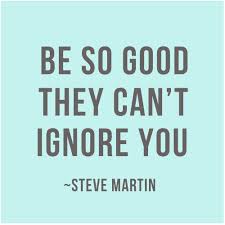
With the cooperation of the German Federal Employment Agency, Fieseler et al. selected 14,000 unemployed people from the national database, and they interviewed 2,414 of them by telephone from February to March 2012. Of those selected:
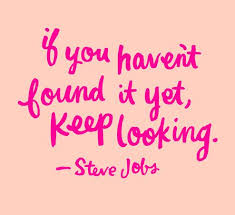
Fieseler et al. examined the effect of online support toward their perceptions of self-worth in the job-search process. They based their 2012 conclusions on 1,322 of the 2,414 participants who completed the entire questionnaire and could access the Internet. The researchers defined enabling online support as online advice, suggestions for contacts, help finding online job postings, and references needed for job offers. They examined the effect of enabling online support to achieving job-search self-efficacy (think each job hunter’s self-worth). Each item on the questionnaire, which was finalized with feedback from a pilot, got rated on a five-point Likert scale (1, applies to all, to 5, does not apply at all).
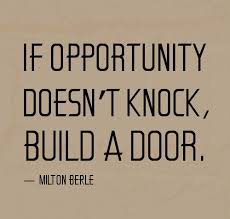
From this research, we can learn:
Fieseler et al. also posited that unemployed people might fill their time otherwise at work with social media instead. However, they wondered if job-seekers would openly advertise this status, noting, “unemployed individuals tend to be rather unwilling to openly express that they are jobless. Although individuals might share their feelings with close friends or family for emotional support, the topic is paradoxically excluded from the context of the job search” (p. 172). This area of interest, as well as the possibility that online job-hunters might create online personas and impressions to enhance their image to hiring managers, could be interesting avenues for future research.
(This article reflects only the opinion of the author.)
Fieseler, C., Meckel, M., & Müller, S. (2014). With a little help of my peers. The supportive role of online contacts for the unemployed. Computers in Human Behavior, 41, 164-176. doi:10.1016/j.chb.2014.09.017
Anyone seeking a new job or wanting to change careers learns quickly the power of social media. However, older applicants and those who’ve been outside the job market – such as military veterans and their spouses – may face unique obstacles beyond the normal stress of a job search. What does preliminary research tell us about how social media helps or hinders members of the military and their families making a career transition to civilian life?
Bluvshtein, Kruzic, and Massaglia (2005) examined people making career transitions aided by social media through the lens of Alfred Adler, a leading individual psychologist who transitioned from military doctor to civilian life in a country that lost. According to these authors, Adler viewed relationships at the core of human nature, traits that get especially tested during unemployment, which fuel emotional stress and doubts of self-worth (p. 144). These researchers cited previous studies that view social media contributing to those feelings of isolation but refuted these theories, noting, “We believe that social media does not displace face-to-fact social connections but makes them stronger” (p. 147). Bluvshtein et al. offered six steps to help those in career transition on social media and achieving lasting meaning from those connections (p. 149).
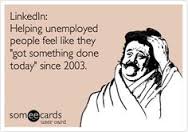
Active military members may distrust or not take advantage of social media opportunities, according to Frame (2016); veterans may view social media as a way for terrorists to track down their family members instead of as an essential career search tool (p. 170). However, members of the military are comfortable with computer-based training and often keep in touch with family back home with Facebook. Frame cited a 2015 study that noted that 95% of recruiters search LinkedIn for candidates and post jobs on Twitter, 92% post jobs and 79% hire people from those connections. About three-fourths of recruiters use social media to increase employee referrals, according to this study (p. 171). Frame suggested ways to protect personal information so military families can feel more comfortable with these public digital networks. Frame suggested that members of the military searching for jobs get active on LinkedIn, build connections with military friends and then increase civilian connections, follow-up on job leads, use less military jargon, and explain skills without giving away classified information (174-175).
Military spouses in particular face career search challenges that include frequent relocation, history of unrelated jobs, living in somewhat poor job markets, and lack of seniority, according to McBride and Cleymans. They cited a 2013 survey that identified today’s military spouse as a 33-year-old female with some post-secondary education and some children in the home who makes about a third less than her civilian peers (p. 92). Read a more entertaining take on unemployed military spouses here.
However, these resilient spouses also tend to possess valuable and employable skills that include adaptability, flexibility, creative thinking, problem solving, and organizational skills, but may not necessary have the know-how to communicate the value of those skills to hiring managers. McBride and Cleymans suggested that military spouses use these job-search strategies: create a career lattice, increase marketability, understand education opportunities, learn job-market lingo, document accomplishments, and leverage social media (p. 93).
References
Bluvshtein, M., Kruzic, M., & Massaglia, V. (2005, Summer). From netthinking to networking to netfeeling: Using social media to help people in job transitions. Journal of Individual Psychology 71(2). 143-154.
Frame, P. P. (2016). Coaching veterans to understand the value and proper usage of social media. Career Planning & Adult Development Journal, 32(2), 170-176.
McBride, P., & Cleymans, L. (2014, Fall). A paradigm shift: Strategies for assisting military spouses in obtaining a successful career path. Career Planning & Adult Development Journal, 30(3). 92-102.
Social media may be a two-edged sword to older job applicants without current employment or people who are attempting a career transition later in life. Today’s job-hunters won’t get far without access to digital job applications, online job postings, and email for correspondence.
Lopez-Kidwell, Grosser, Dineen, and Borgatti approached job searches within job search goal life spans with two empirical studies focusing on “social comparison theory, control theory, and the attentional focus model of time pressure”. They concluded “(1) prior job seeker effort is positively related to current effort across stages, (2) average peer job search effort is more strongly and positively related to job seeker effort earlier in job search, and (3) job search progress (i.e., the ratio of interviews to applications in Study 1 and perceived progress in Study 2) is negatively related to job seeker effort later in job search” (p. 1655). The researchers surveyed 78 American MBA students averaging about 25 years of age. At least they admitted predictable survey design results in that “Although supportive, the results are based on a relatively small sample of individuals who, as members of a highly cohesive cohort, were in a somewhat unique job search context” (p. 2013).

Much more useful insights are those shared by private career counselors Reiff and Labovich (2014), who had actual conversations with professionals who are attempting a shift in the middle of their careers. They truly understand that “Feelings of vulnerability; fear of the unknown, of rejection, of networking; or fear of failure tend to derail even the most motivated and qualified job candidate” (p. 176). Those in career transition should develop a personal marketing plan, which includes specific scripts for predictable social situations with snappy answers (Labovich & Salpeter, 2013, as cited in Reiff & Labovich, 2015, p. 177). Mid-career professionals should also use the “3 C’s of brand communications: clarity…about who you are and who you are not…consistency [in] steadfastly expressing your message no matter what communications vehicles you choose…and constancy [in] being visible to your network (Arruda & Dixson, 2007, cited in Reiff & Labovich, 2015, p. 177). Reiff and Labovich also advocate being open and candid about physical imperfections such as hand tremors in one case or explaining why someone would take a seemingly lower job.
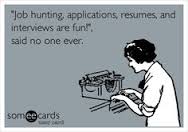
Any middle-aged professional who got caught jobless during the recession won’t be surprised by the findings of Wanberg, Kanfer, Hamann, and Zhang (2016). These researchers found “a negative relationship between age and reemployment status and speed across job search decade, world region, and unemployment rate, with the strength of the negative relationship becoming stronger over age 50” (p. 400). The authors contributed a theoretical and empirical analyses that provided “new research directions that are important to policymakers, job counselors, employers, recruiters, and job seekers in improving the experience and success of job pursuit after job loss” (p. 401). “Our model, describing the ways in which aging is associated with multiple factors (e.g., physical abilities, motives, social networks, search strategies, and marketplace demands) is relevant to job search will be useful to practitioners that assist job seekers” (p. 416).
(These opinions reflect only those of the author.)
References
Arruda, W. & Dixson, K. (2007). Career Distinction. Standing Out by Building Your Brand. New Jersey: John Wiley and Sons, Inc.
Labovich, L., & Salpeter, M. (2012). 100 Conversations for Career Success. New York: NY Learning Express, LLC.
Lopez-Kidwell, V., Grosser, T. J., Dineen, B. R., & Borgatti, S. P. (2013). What matters when: A multistage model and empirical examination of job search effort. Academy of Management Journal, 56(6), 1655-1678. doi:10.5465/amj.2011.0546
Reiff, K. K., & Labovich, L. L. (2014). Courageous networking conversations for mid-career professionals in transition. Career Planning & Adult Development Journal, 30(2), 176-182.
Wanberg, C. R., Kanfer, R., Hamann, D. J., & Zhang, Z. (2016). Age and reemployment success after job loss: An integrative model and meta-analysis. Psychological Bulletin, 142(4), 400-426. doi:10.1037/bul0000019
January 15, 2009: The head dude in charge of the investment advisory firm where I worked herded us together into a conference room around 11 a.m. He dismissed about a third of the group, so those who remained could pack our cubes and leave our jobs behind.
When I got home, the news featured an airline pilot who successfully landed in the middle of the Hudson River, saving all those aboard. “Sully”, starring Tom Hanks and directed by Clint Eastwood, will be released after Labor Day.
Okay, I thought after listening to the evening news broadcast that night, perhaps I’m not having the worst day after all.
I picked myself up and found a way to make it through 18 months of unemployment for the first time since I graduated from college, well, a long time ago. I felt embarrassed to tell family members and friends that I “lost” my job, sad that a part of my self-identity was missing, confused because I wasn’t sure what I wanted to do next, and angry at the boss who told us at the holiday party that everything would be okay.
Soon I realized that I needed to get out of the house. I found something to do in the church office and then offered to help with a new job-networking group at church. Before long, I became the leader of the weekly group that brought together white-collar professionals, blue-collar workers, and marginalized unemployees. We shared snacks, resume tips, job leads, empathetic conversations, and brainstorms. I attended career search groups held in the west end of town and returned with success stories, career search tips, guest speakers, and online resources. Our little group even made the local weekly free newspaper.
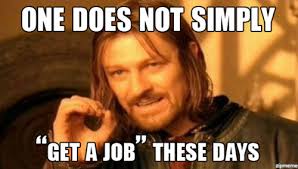
In July 2011, I received a call from a Charlotte recruiter, who connected me with a hiring manager in Boston and a team leader in Trenton. I’ve been working from my remote home office ever since.
Based on my experiences leading a job-networking group during the recession, here’s what I know for certain about career searches:
When you recover from your job loss, you might find as I did that the time for some rest and self-reflection led to something even better. I’m now working for the biggest competitor of the company that laid me off in 2008. 🙂
(These opinions reflect only those of the author.)
It’s not easy being a writer any more.
I started my career as a community journalist. That style came easily to me: Write the most important hook first, in a way that made readers continue past the first sentence or two. Then I evolved to a writer of print brochures to sell brokerage services to a known audience (sales literature, as opposed to advertising). Now, I’m an editorial designer for the country’s largest bank-holding company. Needless to say, I don’t write like I used to report.
What skills must modern writers master?
Effective writers need the ability to translate their messages into multimodal structure. DePalma and Alexander (2015) compared writing multimodal compositions to “a bag full of snakes”. (That analogy made me laugh, too.) According to its abstract, “Findings from focus group interviews and written reflections show that students’ attempts to draw on their print-based rhetorical knowledge while composing multimodally worked well when they perceived print-based and multimodal composing tasks as similar, but they faced significant difficulties when they perceived the need to adapt their print-based composing knowledge to suit new or unfamiliar aspects of multimodal composing” (p. 182). Oh, good, I’m not the only one.
Writers who want to publish their works need also to sell themselves. Wilkins observed that writers who want to publish for a living have to market themselves differently in the digital age. “A significant threat to productive writing habits is the publishing industry’s increasing insistence that writers develop an ‘author platform’, that is, a digital authorial identity that can be leveraged to build markets and increase sales. In the 21st century, book sales are increasingly dependent upon a reciprocal flow of communication between writers and readers” (p. 67). A college friend has published two books available on Amazon.com, and I think Patrick Chiles has mastering this sales concept on author’s page. It’s true; we expect authors to offer a credible, persuasive bio on Amazon.com before we select the “Buy now” button, and young people might expect the author to respond immediately to tweets and posts.
Journalists should expect social media as part of their job description. I can empathize with the plight of print-based sports reporters who adapted to tweeting scores and updates instead. Roberts and Emmonds (2016) found that, “Providing contextual insight, the researchers interviewed 10 of the subject journalists to discern how they use Twitter for game-day coverage. Results indicate a more opinion-based use of Twitter during live reporting, shifts in reporting and writing routines, and widely varied opinions about social media’s effects on sports journalism” (p. 97). That research leads Huffington Post contributors to conclude that faster, immediate news sharing sacrifices objectivity.
I’m certain more research requires a more narrow scope of study. I’d like to leverage the insights shared by Sutherland and Deegan in their book Text Editing, Print and the Digital World (2009). “This important book brings together leading textual critics, scholarly editors, technical specialists and publishers to discuss whether and how existing paradigms for developing and using critical editions are changing to reflect the increased commitment to and assumed significance of digital tools and methodologies” according to its abstract. Not surprisingly, copies of the book are available for downloading through the KSU library.
The goal of the National Writing Project (NWP) conducted from 2010 to 2012 was to “to create a framework to guide teachers working with students on creating multimodal compositions”, and it found that the “five dimensions the committee found to be critical to multimodal composing: artifact, rhetorical skills, substance, process management and technical skills, and habits of mind” (p. 79). According to Sandra Murphy, “The process of composing becomes much more complex because so many multimodal productions are collaborative. That’s a new direction that people are thinking more and more about. There is a need to be able to look at processes of collaboration and how students manage them as being a kind of skill. You want to foster that so people can be successful in college and in the world of work” (p. 84).
For my next task, I will develop a research problem and question when focusing on technical skills needed by today’s successful writers.
References
Chiles, P. Patrick Chiles. Retrieved from http://www.amazon.com/Patrick-Chiles/e/B006VWUXOY/ref=sr_ntt_srch_lnk_1?qid=1466366739&sr=8-1
DePalma, M., & Alexander, K. P. (2015). A bag full of snakes: Negotiating the challenges of multimodal composition. Computers and Composition, 37, 182-200. doi:10.1016/j.compcom.2015.06.008
Roberts, C., & Emmons, B. (2016). Twitter in the press box: How a new technology affects game-day routines of print-focused sports journalists. International Journal of Sport Communication, 9(1), 97. doi:10.1123/IJSC.2015-0113
Sutherland, K., & Deegan, M. (2009). Text editing, print and the digital world. Farnham, England: Routledge.
Wahleithner, J. M. (2014). The National Writing Project’s multimodal assessment project: Development of a framework for thinking about multimodal composing. Computers and Composition, 31(Multimodal Assessment), 79-86. doi:10.1016/j.compcom.2013.12.004
Wilkins, K. (2014). Writing resilience in the digital age. New Writing: The International Journal for The Practice & Theory Of Creative Writing, 11(1), 67-76. doi:10.1080/14790726.2013.870579
(These opinions reflect only those of the author.)
How do my personal experiences affect my topic of choice for my research paper?
Hmm.
Few things make me happier than cheering for my two teenage boys who travel ice hockey, but I’m not sure that Dr. Bohannon wants to hear more about that. I analyzed the hockey club’s website for Dr. Palmer’s graduate content strategy course, and I blogged about an 18-year-old goalie who was hit by a car in Dr. Hutchins’ social media capstone course last semester. During one of my research expeditions in the online school library, I came across an interesting study about the influence of youth sports coaches on players, so that’s one potential topic.
After I finish this course, I will have used most of the $5250 annual tuition reimbursement allotment I receive from my employer (and the IRS). Nevertheless, I’ve perused comparable graduate courses in my field of study (communication, English, marketing, professional writing, public relations, and technical writing) for my final two classes next spring. I’m very disappointed that the consolidated KSU offers no graduate courses in technical writing. What are some of the trending topics in technical communication? Perhaps I could leverage my experiences working as a web writer within trios that also include an information designer (often also the team project leader) and a visual designer. What can I do as a writer to demonstrate my ability to act as a project manager as well? Perhaps I could research the role of technical writer as project manager.
I started my career (a long time ago) as a reporter. After two years out of the workforce and the country, I reinvented myself as an administrative assistant, and then evolved to marketing writer, compliance communications analyst, writing team manager, and now editorial designer. Over the years, I’ve (gasp) re-invented myself as a writer for stuff that gets printed to stuff that gets published on digital pages. Today’s communicators must adapt quickly, as Dusenberry, Hutter, and Robinson noted in their 2015 study in the Journal of Technical Writing and Communication: “This article establishes traits of adaptable communicators in the 21st century, explains why adaptability should be a goal of technical communication educators, and shows how multimodal pedagogy supports adaptability” (p. 299). That topic is right up my alley, and I suspect the language reflects Dr. Bohannon’s philosophy as well. Yes, today’s writers and communicators must be able to engage with diverse audiences (and colleagues), mediate messages with empathy and conviction, and solve problems are all necessary skills, as the authors noted. I think I may have a winner here. 🙂
Another hot subject out there is responsive design. Essentially, the term refers to information design that is device neutral, so theoretically the same design infrastructure or content could exist as well and communicate as effectively on a web page and a mobile device. Knight explained this concept in an online Smashing magazine blog. That’s easier said than done, as anyone who’s faced limitations of an arcane CMS content publishing system knows. The subject keeps coming up at work, and I’d like to demonstrate stronger expertise in this area. However, there’s limited academic peer-reviewed research on this topic that I could find, which means trying to locate books that I generally cannot access as a remote student, or researching more contemporary web-based sources instead.
I think I’ll be happier and more engaged in the process of researching and writing a paper about the evolving role of writer in today’s digital world.
References
Knight, K. (2011, January 12). Responsible web design: What is it and how to use it [Web log post]. Retrieved from https://www.smashingmagazine.com/2011/01/guidelines-for-responsive-web-design/
Spadaccia, K. (2016, May 9). 18-year-old hit by car reminds drivers to slow down and move over when approaching accidents [Web log post]. Retrieved from https://krisspadaccia.com/2016/05/09/18-year-old-hit-by-car-reminds-drivers-to-slow-down-and-move-over-when-approaching-accidents/
(These opinions reflect only those of the author.)
How do my professional and personal experiences affect my perceptions of visual media?
At work, I’m a writer with nearly two decades of experience for investment brokerage firms owned by banks, plus three years as a reporter. I try to keep up with my colleagues concerning the user experience role within the sector, but I don’t spend any of my leisure time researching this topic.

When I’m not working, you can find me completing assignments in this graduate course, cheering for my two teenage boys who play travel ice hockey, volunteering as a board member and team manager (more than 200 hours each year), cooking and home-canning, and escaping mentally with novels and movies that don’t require much brain power.

I really think I should get out more.
At work, I write for two websites, mostly after users log in. Thanks to my role within a large-scale corporate application development process, I appreciate well-thought-out online spaces that value my time as much as I do, so I quickly abandon user experiences that fail to deliver. That may help explain why I do most of my online shopping on safe, credible websites like Amazon.com and tend to spurn lesser-known online boutiques. I also tend to stick with predictable games like Angry Birds and Candy Crush.
I started my career as a reporter, so that means I’m resourceful and nosy. Apparently, I’ve passed on those traits to my son David when he’s online. I recall a proud parent moment last week when he entered logical search terms on my iPhone to find the right information quickly while I was driving. On Sunday, he politely thanked his aunt for a birthday check, and then used his smartphone to mobile deposit the check into his savings account in about 30 seconds. Was that unintentionally rude? Should he have waited for her to leave and then complete the mobile deposit? I’m not sure of parental best ethos in situations like that.
I tend to over-analyze and second-guess myself, and those annoying traits seep into my digital practices. For example, I received a Hello Fresh coupon and decided to check it out. I clicked to get started, and then chose one of three types of baskets. I entered my shipping information, and noticed a first-time user promo code applied to the order. The dollar amount and “click here to pay” stopped me in my tracks. What exactly am I ordering, and is a subscription required? I wasn’t sure. Which is the better deal – the first-time user code or my coupon? Five minutes later, I figured out that the coupon I received in the mail reduced the cost by $5 more. I still haven’t placed my order. For me, the Hello Fresh site needs stronger pathos to persuade me to give it a try.
I’m rather introverted; I supposed it comes with the writer territory. I tend to stay within the sites that won’t generate a corporate security alert, and don’t view viral videos until they make the Today show the next morning. Cooking and home-canning in a house of boys isn’t exactly a team sport.
Like I said, I really should get out more.
References
Spadaccia, K. (2015, November 15). Yes, I can: The research behind home canning. [Web log post]. Retrieved from https://krisspadaccia.com/2015/11/02/yes-i-can-the-research-behind-home-canning/
Spadaccia, K. About [Web log post]. Retrieved from https://krisspadaccia.com/about/
(These opinions reflect only those of the author.)